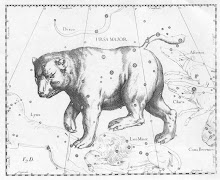In my prior entry, I described some of my experience, and sense of beauty and passion, of my vacation trip to the Udvar-Hazy Center of the National Air and Space Museum. Now, I would love to tell you that not all of my vacation was technology geek focused, and that would be true. (I went to two plays, including a performance of The Merchant of Venice set in 1930’s Chicago.) In addition to the history of aviation and space flight, I spent time in the National Building Museum’s exhibits of the World’s Fairs and Exhibitions of the 1930s (entitled “Designing Tomorrow”), and Lego(TM) models of several iconic buildings from around the world. But, all of that was an appetizer, a warm-up, for the primary emphasis of the week:
I went to Kennedy Space Center for the launch of Atlantis and STS-135.
From what I hear, the traffic and crowds were intense, and potentially overwhelming, but I did get to miss much of that. (Just the families of the astronauts took up 18 busloads of guests.) Because of the Avicenna Academy participation in the Student Spaceflight Experiments Program, I was invited to access just a few miles south of the KSC launch complex. There I met Amanda Arceo, the lead (and heart) of the Avicenna project. She, some of the students, and members of the Academy’s board were in attendance as part of the celebration of the participation of these amazing student researchers. (You can read more about Amanda’s launch experiences at the NCESSE site.) It was an exciting morning, with lots of the hopes and promises of the entire Shuttle Program and NASA in general symbolized in the periods of clear skies among the cloudy morning, and uncertainties all the way through the launch hold at T-minus 31 seconds. Commander Ferguson’s pre-launch message was one of the highlights for me, as he spoke of the capabilities of a people who dare to attempt bold goals and work hard to achieve them. (If I can find a recording of those remarks, I will certainly link to it.) Eventually, we got to zero, and the flames from the engines became brightly and intensely visible over the water and trees at KARS. (Because of the cloud cover background, this was an even brighter display than the previous launch I witnessed, during mid-afternoon of a nearly cloudless day in August.) A few seconds later, the ground (and our bodies) shook with the echoes from the launch pad.
Yes, there were more tears.
I remember being a college frosh in April of 1981, in the “Lobby 7” of MIT with others craning to watch one of the television screens for the first launch of Columbia and STS-1. For STS-135, there was a lot of bittersweet memory, and thoughts, and hopes. When will we be able to go see astronauts launch from Kennedy Space Center again? I’m not sure. Is the space program over? No, but I do believe that it will look very different in 5-10 years than at any previous time in my adult life. Would I want to be involved in whatever comes next? Of course—that’s what I designed my life and career to be able to do.
So, was this vacation, or work? Neither, and both—attending the launch of STS-135 was a form of passage for me, and a gift, and a piece of sacred experience. I was there, and it is a memory I can carry with me. That is beauty, and life, and passion—and isn’t that worth doing when you get the chance?






